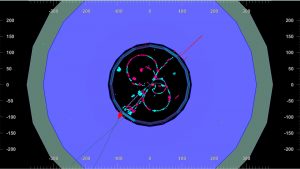
On the 25th of April the SuperKEKB accelerator in the KEK Laboratory in Tsukuba, Japan, produced its first electron-positron collisions. The Belle II detector, installed in the interaction point of the two particle beams, observed the first events deriving from the electron-positron annihilation.
It has thus come into operation the accelerator that will achieve the highest luminosity in the world, 40 times higher than the current global record set by KEKB, the previous accelerator of the Japanese laboratory. It is to be noted the project is based on the “nano-beams” scheme, beams of nanometric vertical dimension, elaborated for the Italian super flavour factory SuperB by the LNF physicist Pantaleo Raimondi, former Director of the LNF Accelerator Division.
The Belle II detector at SuperKEKB was designed and constructed by an international collaboration of more than 750 researchers from 25 countries, to which Italy participates with over 70 scientists from 9 different INFN sections and laboratories. The Frascati National Laboratories team shares with the Roma 3 section the responsibility of realizing the electronics of reading for the RPC detectors of KLM, the detection system of muons and K mesons. According to Riccardo de Sangro, coordinator of the LNF group of Belle II, “Registering the first collisions represents a significant milestone for the SuperKEKB accelerator and the Belle II experiment, and the starting point to achieve the project results.”
For more information reference is made to the INFN press release: http://home.infn.it/it/comunicazione/news/2872-giappone-prime-collisioni-a-superkeb-inizia-l-avventura-di-belle-ii
Translation by Camilla Paola Maglione, Communications Office INFN-LNF
 INFN-LNF Laboratori Nazionali di Frascati
INFN-LNF Laboratori Nazionali di Frascati